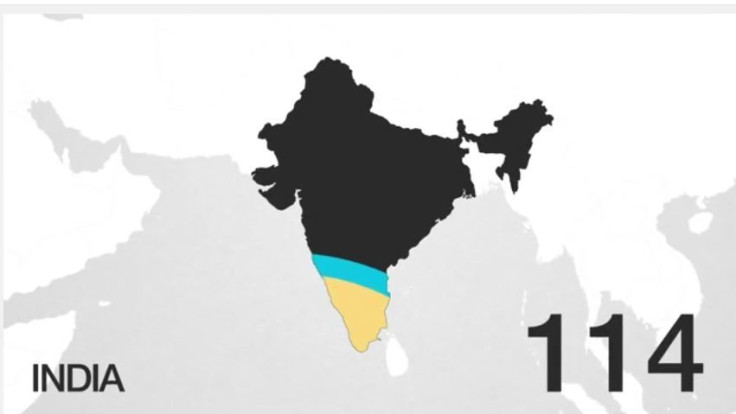Gender Gap Report Finds India Losing Ground On Health Issues: Is Safe Sanitation Key?

Developed in 2006, the Global Gender Gap Index is tracking each nation’s progress toward gender equality and trying to answer exactly this question. Because of its potential to shape the coming year, Medical Daily revisits the report today to dwell on one of its key findings: 35 countries have fully closed the health gap, described as life expectancy and sex ratio at birth, yet nearly 40 percent of the world's nations have backtracked in their progress toward health equality. In particular, the report highlights India as losing most ground over the past year. This YouTube video offers a general overview of the report:
Published by the World Economic Forum, the 2014 report is comprehensive, if a bit difficult to navigate. However, it’s worth any reader’s time as it raises and answers a number of key questions, including, Why would the forum — an assembly of European business leaders primarily concerned with financial prosperity — focus on health? The impact of health on economic growth is well-documented, the report's authors note, and “studies have shown that a one-year increase in health expectancy could raise GDP by up to four percent." A boost in health, please excuse the rhyme, will increase the wealth. The authors also suggest improved well-being contributes to reducing poverty and improving a nation's overall growth. In short, health is essential to a nation’s ability to thrive.
So how does the 2014 Gender Gap Index rank the world's nations with regard to health? The general picture is rosy, with most nations having closed the health gender gap. In particular, the highest ranking country in all measures, Iceland, shows nearly the exact same lifetime expectancy for both women and men. Commonly we think of women outliving men in the high income countries, so it's heartening to see true gender equality. The bottom nations are Vietnam, Albania, China, India, and Armenia. Though it dwells on sex ratio and life expectancy differences between men and women, additional information is provided in each country's profile on differences between women and men facing cardiovascular disease, cancer, diabetes, respiratory disease, HIV, malaria, tuberculosis, and malnutrition.
Spotlight on India
India is home to 1.24 billion people, or 17.5 percent of the world’s population. Its median age is 26.6 years, suggesting a youthful and vibrant culture. In recent years, that nation has made tremendous strides in terms of economics and health; notably, India was declared polio-free in 2014. “The legacy of the polio eradication campaign is that India now has the know-how and operational skill to reach every child with essential health interventions, no matter how marginalized and remote they are,” Dr. Nata Menabde, WHO Representative to India, stated in a recent press release. In Menabde's words, India now has the know-how and skill — the agency — to create whatever future it dares imagine for itself.
Currently, the great nation is failing its people in terms of health. According to the authors of the report, "The first variable is the sex ratio at birth, which aims specifically to capture the phenomenon of “missing women” prevalent in many countries with a strong son preference." Glancing at India’s sex ratio in the 2014 Gender Gap Index Report, the figures show 89 girls born to every 100 boys. Natural sex ratio at birth is generally thought to be roughly 103 to 107 male babies born for every 100 females. Though imbalanced at birth, male babies are more vulnerable to disease, and as they grow a little older, they tend toward riskier behavior. The number of boys gradually dwindles until the gender split is roughly even when all the babies reach their reproductive years. Comparing India’s ratio to the natural ratio, then, it’s clear sex-selective abortion must be occurring there and this is reflected in their low ranking on the report’s health index.
Another key issue frequently discussed by public health experts is sanitation in India. “Half of Indians don’t have access to safe toilets, which has far-reaching consequences — from higher rates of child mortality to increases in sexual violence,” writes Melinda Gates, of the Bill and Melinda Gates Foundation in this article. This problem must be tackled, and with India's prime minister prioritizing toilets over temples, the nation may someday succeed.



























